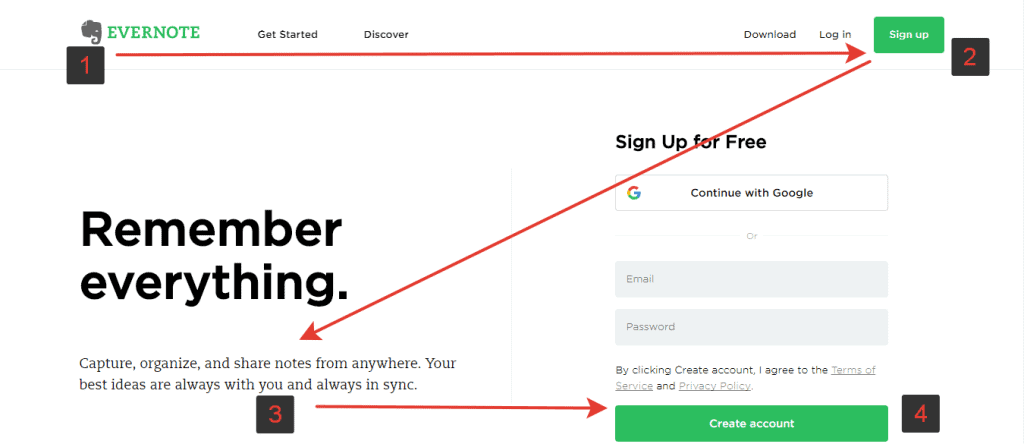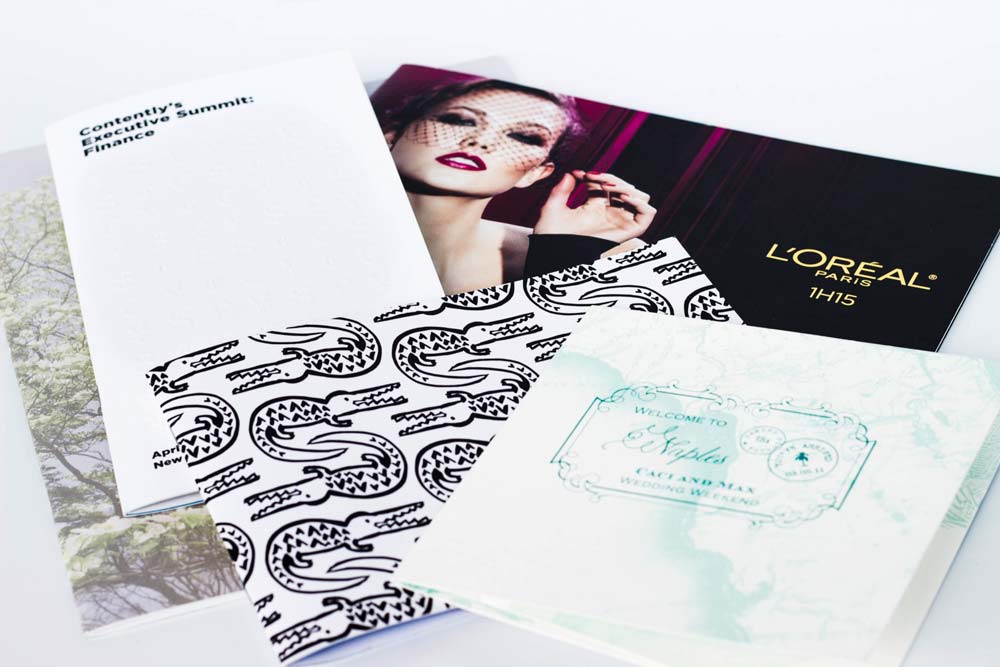The Vital Role of Graphic Design in Marketing
Graphic design is no longer just about creating nice visuals. In today's crowded and competitive digital landscape, graphic design has become a vital strategic tool to attract attention, communicate brand values, and drive consumer action. As marketing shifts towards visual media, understanding graphic design principles and psychology is essential for marketers looking to cut through the noise.
Table of Contents
Making a Strong First Impression
The old saying goes, “You never get a second chance to make a first impression.” The same is true for brands in an increasingly visual world. 93% of communication is nonverbal, with colour increasing brand recognition by up to 80%. High-quality graphic design presents a polished, professional image that builds trust and credibility.
The Purpose of Design in Marketing
- Make a solid first impression
- Communicate brand values and messaging
- Drive awareness and recognition
- Be attention-grabbing and memorable
- Inspire action and conversion
“Graphic design is not just organising information but putting magic, spark, and life into that information and message.”
Mehmet Gozetlik, Graphic Designer.
Good graphic design is not just aesthetically pleasing but strategically amplifies marketing goals.
Visual Hierarchy Guides the Viewer
A core principle of graphic design is visual hierarchy – arranging elements to guide the viewer's eye in order of importance. Proper visual hierarchy allows vital messages to stand out from supporting details.

Design Elements for Visual Hierarchy
- Size – Larger elements attract more attention
- Colour – Vibrant colours stand out from muted backgrounds
- Space and Layout – More space creates separation and elevates importance
- Style – Unique stylistic elements draw the eye
Getting visual hierarchy right ensures messaging clarity and eliminates confusion. Misguided hierarchy muddles communication objectives.
This homepage design uses size, colour, space, and style to create a solid visual hierarchy, guiding the viewer step-by-step.
Brand Identity Through Colour and Style
Colour and stylistic choices powerfully shape brand perception and recognition. 92% of consumers say colour is the primary reason they buy a particular product, making colour strategy crucial for differentiation.
Beyond colour, stylistic elements like typography, shapes, patterns, and illustrations set the visual tone. A cohesive style creates familiarity across touchpoints, cementing brand identity in the consumer's mind.

This brand guideline design board demonstrates a unified stylistic direction across imagery, colour, typography, shapes, and graphic elements.
Consistent design that aligns with positioning allows customers to recognise a brand instantly—deviating damages familiarity and trust.
Visual Systems That Strengthen Brand Identity
Beyond logos, brands use graphic designers to create visual systems that maintain consistent messaging across media touchpoints.
Colour Palettes
Using signature colours repeatedly reinforces branding across communications. Specific hues can evoke emotions and associations that reflect brand values. Bold, vibrant palettes suit youthful brands, while muted tones align with conservative identities.
Typography
Selecting one or two complementary fonts enables cohesion. Stylistic choices like serifs, sans serifs, script, and decorative fonts communicate brand personality. Consistently implementing typographic hierarchies also strengthens presentations.
Image Styles
Images showing idealised lifestyle scenes, product photos, or graphical motifs bring branding to life. Consistent image filters, compositions, colour adjustments, or graphic treatments ensure visual alignment.
By centring branding around strategic graphic design, companies spur familiarity and recognition critical for marketplace success.
Website Design Converts Visitors to Customers
A company's website is often the first touchpoint in the buyer's journey. The clean, functional design builds credibility while reflecting brand values to hook visitors. Good web design leads to 94% more return visitors and 400% more inbound links.
Website Design Principles
- Simple, intuitive navigation
- Prominent calls-to-action
- Quality engaging content
- Strong visual hierarchy
- Immersive branding
- Optimised for all devices
“Good website design puts conversion as the number one goal, not aesthetic appearance or visual wow factor. Design to keep visitors moving towards defined goals required to grow the business.”
Nick Babich, UX Designer.
Driving action requires understanding user intent and behaviour, not just creating pretty pages.
Homepage Hierarchies Guiding User Journeys
A site's homepage first welcomes visitors, so its layout directly impacts navigation. Graphic designers carefully structure homepage content hierarchies through:
- Prominent Branding – Logos, slogans and colours
- Hero Images – Dramatic visuals conveying emotions
- Calls-To-Action – Clickable buttons prompting engagement
- Supporting Graphics – Icons organising site sections
- Minimal Negative Space – Filling area to reduce clutter
This strategic positioning directs eyes down the page, focusing on crucial messaging in order of importance. Visual solid hierarchies instil order, improving user experience.
Scannable Layouts for Skimming Content
Website visitors skim read, so graphic designers craft scannable page layouts through:
- Short Paragraphs – 3-4 concise sentences
- Subheadings – Breaking up text
- Bulleted Lists – Organizing information
- Supporting Graphics – Relevant photos, icons, charts
- White Space – Blank areas minimising distractions
These reader-centred techniques ease the digestion of information, facilitating engagement and conversions.
Illustration Makes Complex Topics Approachable
Illustrations simplify complex ideas into easily digestible visual metaphors rather than pages of text or technical diagrams. Articles with relevant images get 94% more views than wall-of-text.
Benefits of Illustration
- Simplify complexity
- Improve comprehension
- Increase engagement
- Make topics relatable
- Add personality and emotion
“An illustration is an expression of an idea through a visual metaphor. A good illustration doesn’t just show. It also amplifies the idea by interpreting it differently.”
Jake Parker, Illustrator.
Thoughtful illustrations embedded in messaging inspire action by connecting logically and emotionally.

This illustrated campaign uses visual metaphors to communicate complicated product features, making them relatable and memorable.
Video Content Brings Brands to Life
Once a nice-to-have, video content is now essential for brand-building. 90% of customers say video helps them make buying decisions. Motion, sound, and visuals create emotional connections lost in static ads.
Video Types Across the Buyer's Journey
- Demo Videos – Showcase products
- Explainer Videos – Highlight features/benefits
- Testimonial Videos – Build credibility
- Behind-the-Scenes Videos – Establish brand personality
- Help Videos – Provide support
“Well-produced video amplifies all aspects of the customer experience, ahead of any other type of content.”
Jenny Campbell, CMO.
The video spotlights brands' strengths while forging personal connections vital for sales.
Visual & Text Balance in Advertising
Balancing visuals and text in ad design ensures a solid aesthetic that matches the messaging. 67% of consumers consider visual appearance over informational content in ads.
Too much text looks boring and won't get read. Too little, and critical messages get lost. Advertising relies on concise, hard-hitting copy matched with striking visuals in harmony.

This print ad complements concise messaging with vibrant, enticing food photography to spark interest.
Ads with disjointed text/visual balance won't achieve branding or response rate goals.
Captivating Social Media Visuals
Social platforms thrive on captivating imagery and video. As channels like Instagram and TikTok soar in popularity, graphic design takes on amplified importance for showcasing brands creatively.
Instagram Grids Curating Lifestyle Aesthetics
Instagram’s foundation relies on the graphic grid of images brands curate on their profiles. Followers discover emerging labels through shared visual worlds communicating aspirational sensibilities. Successful Instagram grids integrate:
- Cohesive Filters/Editing – Uniform image adjustments ensure flow
- Harmonious Compositions – Aligning graphical frames
- Consistent Motifs – Repeating patterns or poses
- Stylistic Color Palettes – Signatures hues unifying imagery
- Engaging Captions – Words reflecting themes
Strategic graphic design branding attracts niche audiences, spurring viral sharing.
TikTok Videos Rife With Creativity
On TikTok, fleeting videos showcase products playfully. Brands devise innovative graphic video concepts to captivate scrolling users through:
- Unique Transitions/Effects – Manipulations engaging Gen Z
- Stylised Motion Graphics – Animated text/graphics
- Branded Stickers – Overlaying logo graphics
- Green Screen Backdrops – Immersing products contextually
- Hashtags/Challenges – Strategic viral marketing
Vibrant videos spotlighting brands creatively mesmerise viewers, prompting impulsive shares.
Print Design Mastery

Despite digital’s dominance, print retains unique tactile power. From brochures to billboards, graphic print design skills remain vital for communicating messages attractively.
Brochures – Informative Creative Showcases
Brochures enable creatively presenting product details. Graphic designers develop brochure layouts that:
- Establish Hierarchy – Guiding readers through key details
- Implement Grids – Organizing information cleanly
- Include Infographics – Simplifying complex data visually
- Incorporate Photos – Adding visual interest
Strategic brochure designs provide engaging overviews building desire.
Billboards – Impactful Roadside Attractions
Billboards creatively grab the driver's attention. Restricted to glances, graphic designers optimise messaging through:
- Bold Typography – Communicating quickly
- Captivating Taglines – Piquing interest fast
- Evocative Images – Aligning with emotions
- Minimal Details – Preventing visual overload
Billboards advertise wares for seconds at a time. Robust graphic design makes impressions.
Infographics Distill Data Clearly
Dumping endless statistics overloads readers. Infographics artfully distil volumes of data into compelling visual representations for fast comprehension. Content with relevant images gets 94% more views.

This infographic uses colour, icons, concise stats, and logical grouping to communicate critical insights at a glance.
Infusing graphics into stats turns dry numbers into engaging storytelling. Poor infographics just decorate data randomly rather than revealing key takeaways.
Graphic Design Testing Improves Performance
No graphic lives in a vacuum. Designs get judged by accurate metrics like clickthrough rate (CTR), conversion rate (CVR), and return on investment (ROI). Testing visual variants is vital to optimise response. Even minor changes in colour, layout, images, etc., can massively impact results.
Types of Design Tests
- A/B Testing – Test against control
- Multivariate Testing – Test multiple elements
- Split Testing – Test multiple variants
- Heatmap Testing – Track eye scanning
“We never guess or assume that a design works. We let the data dictate design decisions through relentless testing and optimisation.”
Chris Gimmer, Design Director.
What graphic elements work ultimately comes from data-backed testing, not designer preferences or intuition.
Leveraging Design Psychology Triggers Emotion
Human psychology governs how we process visuals and perceive messaging. Leveraging principles like contrast, repetition, symmetry and more in graphic design elicits automatic emotional responses that motivate action.
Thoughtful use of proven psychological triggers in graphic design elicits robust emotional responses.
Understanding and incorporating design psychology separates good visuals from great ones with truly motivating resonance.
Ensuring Accessibility Broadens Reach

With 1 in 4 adults globally living with disabilities, ensuring accessibility broadens reach. Design choices like colour contrast, alt text, and layout allow the visually impaired to engage through screen readers. Accessible design leads to 120% higher customer satisfaction.
Top Accessibility Tips
- Add alt text for images
- Ensure colour contrast ratios
- Use headings and lists
- Size text appropriately
- Support screen readers
- Accommodate motor difficulties
“Accessible design considers how users access, perceive, understand, and interact with content and technology. It is essential for creating equality.”
Jennifer Aldrich, Accessibility Engineer.
Accessibility expands brand exposure beyond conventional demographics by removing barriers for disabled users.
Optimising Design Workflows – Streamlining Creative Marketing Production
Juggling countless design projects simultaneously demands workflow strategies, balancing efficiency and innovation.
Implementing Style Guides
Style guides compile design standards into centralised branding rulebooks, including:
- Logo Usage Policies – Dictating reproduction methods
- Colour Codes – Defining primary/secondary palettes
- Typography Selections – Listing approved fonts
- Image Filters/Compositions – Cataloging go-to edits
By outlining these guidelines upfront, designers preserve consistency across channels when collaborating with creative teams.
Building Design Systems
More extensive than style guides, design systems offer complete creative component libraries to mix and match modularly. These incorporate:
- Colour Swatches
- Vector Icons
- Photography
- Graphical Mockups
- Code Snippets
Centralising assets into intuitive interfaces streamlines ideating and iterating fresh layouts efficiently at scale.
Implementing Version Control
When collaborating, version control platforms like Figma enable organised file sharing. Features like:
- Cloud-based Designs – Accessing work anywhere
- Edit Histories – Tracking changes
- Comment Tools – Reviewing collectively
- Branching – Duplicating to test options
- Version Merging – Combining best concepts
Empower teams to advance unified visions.
With robust creative workflows established, marketing gains agility by marching campaigns towards conversions.
The Future of Graphic Design in Marketing

Graphic design in marketing continues progressing alongside emerging technologies. As virtual worlds expand alongside augmented reality and artificial intelligence, fresh creative frontiers beckon.
Virtual + Augmented Reality
Immersive experiences that digitally transpose consumers into branded realms offer radical engagements transcending screens. Interacting virtually expands sensory marketing through:
- 3D Product Renderings – Examining items holistically
- Gamified Worlds – Navigating playful challenges
- Interactive Screens – Browsing layered graphical displays
- Superimposed HUDs – Projecting data contextually
Augmented virtuality immerses audiences, revolutionising connections.
Generative Design
Harnessing AI-like Generative Adversarial Networks (GANs), algorithms may soon ideate, iterate and produce novel branded content independently after training on vast datasets. Perfecting graphic design absent human limits suggests:
- Hyper-Personalisation – Tailoring to micro-niches
- Rapid Iterative Concepting – Testing exponentially more options
- Continuous 24/7 Output – Optimising constant creation
- Unbounded Creativity – Pushing stylistic innovation
Delegating graphic design to artificial intelligence may yield unforeseeable creative abundance.
As visually oriented channels dominate marketing outreach, graphic design grows more indispensable for sparking engagement. Prioritising compelling graphics makes messages magnetising. With technological frontiers expanding creativity, the future gleams brilliantly.
Conclusion
Graphic design plays a pivotal role throughout the marketing ecosystem – crystallising brand identities, showcasing products attractively, simplifying data persuasively and streamlining creative campaign production. As virtual/augmented reality and AI shape future visual communications, graphic design in marketing takes on exponentially greater importance. By strategically incorporating graphic design across initiatives, brands connect with target consumers meaningfully while future-proofing against shifting multimedia landscapes. Compelling graphic design makes marketing messages resonate.
Frequently Asked Questions
How can I measure the impact of graphic design on marketing success?
Key metrics to track include clickthrough rate (CTR), conversion rate (CVR), return visits, time on site/page, and return on investment (ROI). Testing visual variants through A/B and multivariate testing reveals optimum designs.
What graphic design skills should modern marketers learn?
Core skills include colour theory, typography, layout, visual hierarchy, branding, illustration, advertising, video production, infographic creation, presentation design, and basic graphic programs. Understanding psychology and accessibility is also crucial.
How much should our company invest in graphic design?
Industry benchmarks range from 5% to 15% of the total marketing budget allocated towards design. To maximise ROI, align investments to business goals, continuously test performance, and focus budgets on high-traffic channels and campaigns.
Should we hire in-house designers or use agencies?
In-house teams build institutional knowledge but can get siloed. Agencies provide fresh perspectives, but understanding the business context takes time. A hybrid approach lets in-house owners handle branding while agencies tackle campaign projects.
What separates exceptional graphic design from the average?
The best design balances artistry and strategy. It marries aesthetic appeal with psychological triggers to communicate messages and make emotional connections instantly. It also rigorously tests elements and optimises based on data-driven insights.
